On View
Top Art Collectors Each Reveal One Work They’ve Been Looking at Differently While at Home—See Them Here
In a new online exhibition show at Sean Kelly Gallery, art collectors share their changing perspectives.
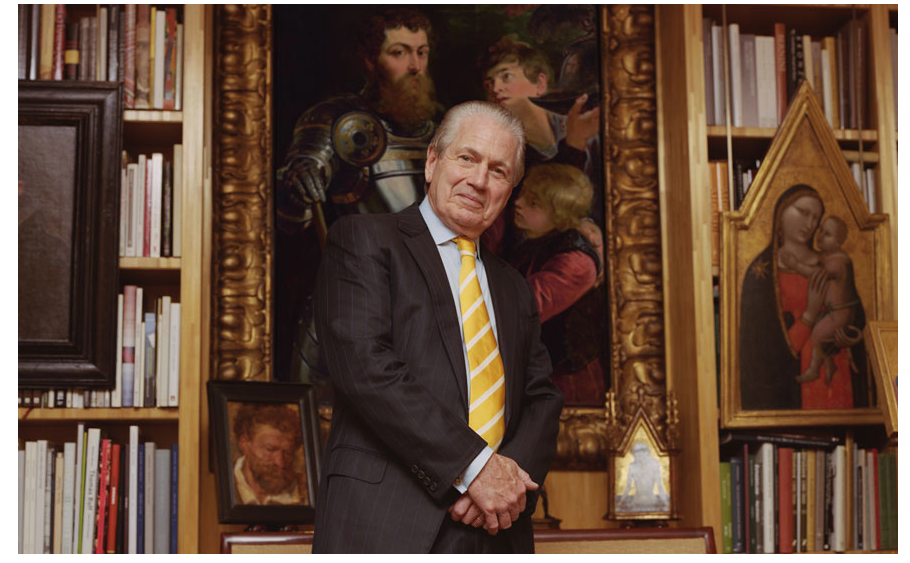
In a new online exhibition show at Sean Kelly Gallery, art collectors share their changing perspectives.

Artnet News

As galleries around the world begin to slowly reopen, we are spotlighting individual shows—online and IRL—that are worth of your attention.
What the gallery says: “In this interregnum, we have paused to reflect and think more intently about not just what we value, but our own core values. With galleries, museums, cultural, performing, and visual arts institutions shuttered, we believe strongly that art will continue to inspire and sustain us, perhaps now more than ever.
To reflect upon and explore this conviction more widely, we have turned to the collectors featured in the [Collect Wisely] podcast and asked them how recent conditions have affected their current thinking about art. In particular, is there one work of art in their own collection that they have been contemplating deeply in this moment of self-isolation and quarantine? Or is there a certain work in their collection through which they have discovered new meaning, or rediscovered passion, given the challenging and unfamiliar circumstances in which we find ourselves? We hope it will provide encouragement and inspiration for the entire art-world community.”
Why it’s worth a look: Rarely do high-flying collectors open their doors to allow in the hoi polloi. But with this virtual exhibition, not only can we see blue-chip artworks in situ, but the collectors who bought them describe what led them to each individual piece.
When Sean Kelly launched his “Collect Wisely” initiative in 2018, the world looked very different: the art market was at a high point and galleries were opening new spaces left and right. The goal of the “Collect Wisely” podcast, which put Kelly in conversation with collectors, was to offer insight into the practice of buying art for love, not for quick profit. Now, two years later, that practice is more important than ever to sustain artists and the galleries who support them.
For this show, the gallery reached out to some of the inimitable collectors who have joined Kelly on his podcast to find out what work of art is most affecting them during these strange days. Participants include Marieluise Hessel Artzt, J. Tomilson Hill, Rodney Miller, Howard Rachofsky, Gary Yeh, and Tiffany Zabludowicz.
What it looks like:

Frank Thiel, Piedras Blancas, (2012/2013). © Frank Thiel / VG Bild-Kunst, Bonn. The collection of Rodney Miller. Courtesy: Sean Kelly, New York.
One of my most rewarding experiences as a collector is sharing works with others through loans to museums. It is gratifying to bring the works to a broader audience. In addition, seeing the work in a museum setting often changes my experience with it. Perhaps it is the larger physical space, compared to home, seeing the reactions of others, or seeing the work in conjunction with different art or artists, but there is no doubt that there is a change.
Piedras Biancas is currently on loan to the DePaul Art Museum in Chicago. This may be one of the few times that I won’t be able to see a work of mine that is in a traveling show, as the museum is closed. However, the increased time spent online viewing art has renewed my affection for this work.
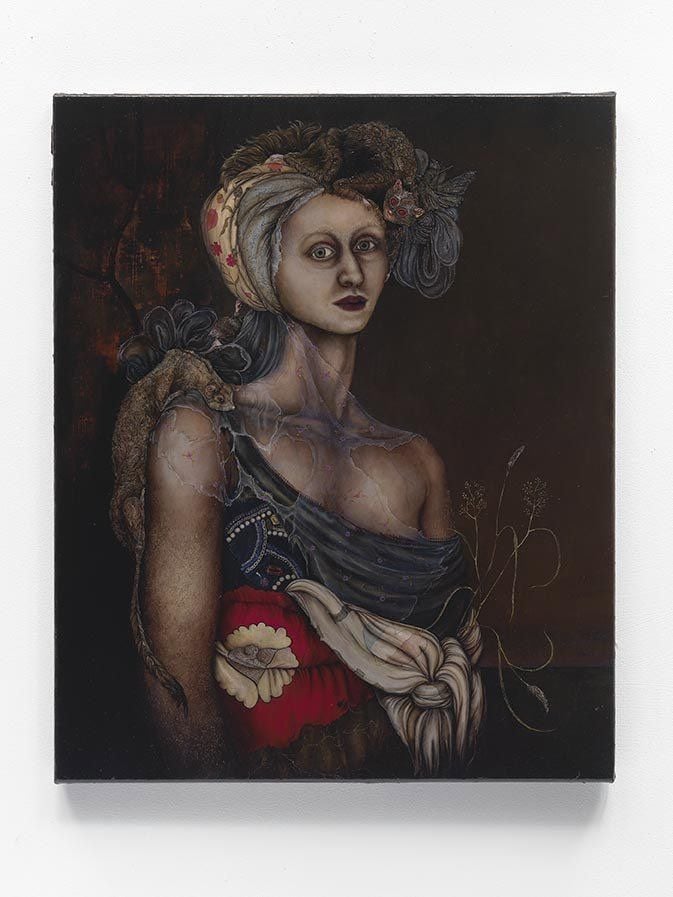
Anj Smith, The Combatant, (2010). © Anj Smith, photo: Alex Delfanne. The collection of Tiffany Zabludowicz. Courtesy the artist and Hauser & Wirth.
I have been thinking about Anj Smith’s work, The Combatant, during this moment. Anj’s beautiful, universal, melancholic work, set against a dystopian backdrop, encourages us all to bravely combat darkness from external and internal forces. The powerful work shows a person, looking with a direct gaze at the viewer, as creatures encroach on its mercurial body…
We are all united in this moment but also we are so alone and Anj’s work teaches us all bravery, power, and defiance.
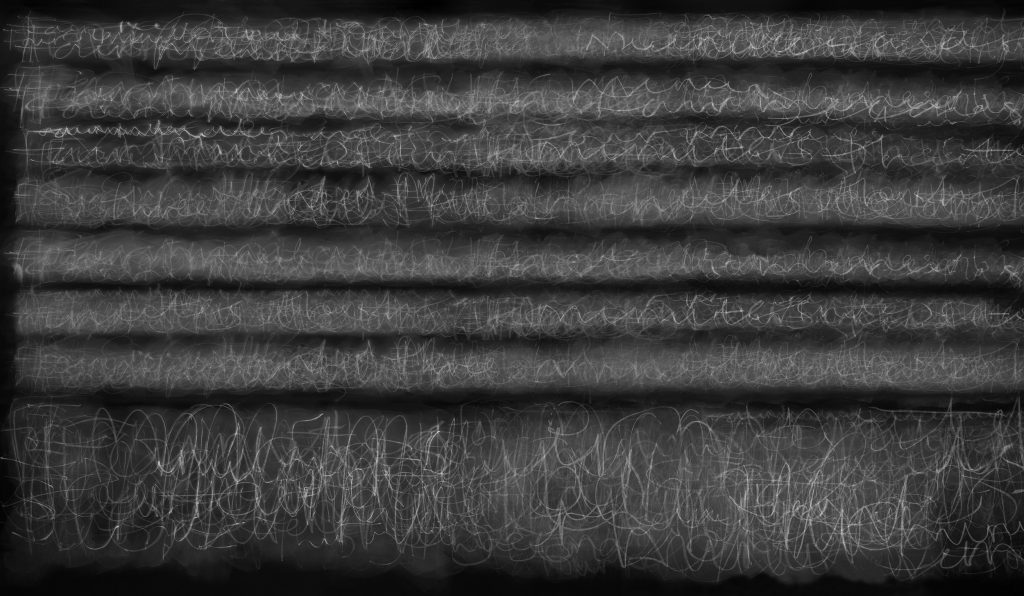
Idris Khan, Four Minutes and Thirty Three Seconds, (2012). © Idris Khan. The collection of Pablo Sepúlveda. Courtesy: Sean Kelly, New York.
During these last few weeks of quarantine, Viviana, the girls, and I have had the opportunity to see and enjoy every piece of art we’ve ever owned from a different perspective. Art has helped a lot in coping with this difficult time…
The art of Idris Khan has always captivated us; we find his photo-based work to be profound because of the deepness of all its layers, intense but in a way subtle. The way he uses color and shapes gives us peace. All of the layers of information in this piece make me think of the complexity of the times in which we are living. A circumstance that is new to everyone and a time that forces us to be creative, in the same way Idris Khan had to be creative at the time he conceived this work of art.
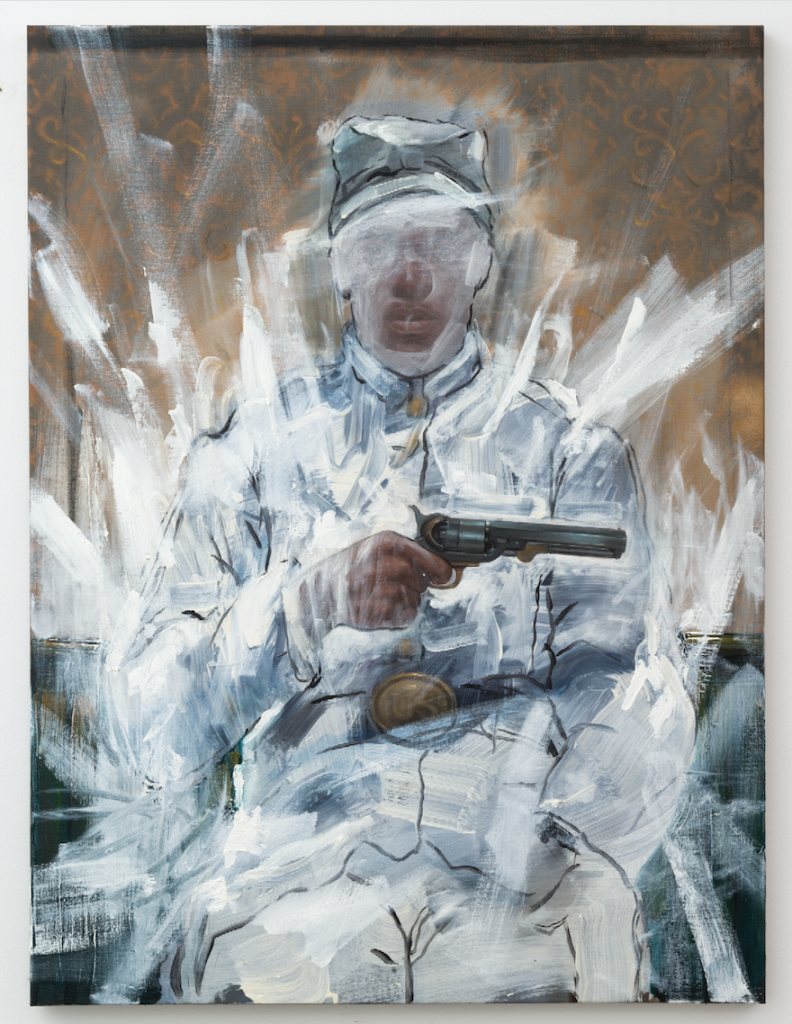
Titus Kaphar, Time Travel, (2013). © Titus Kaphar. The collection of Ron Pizzuti. Courtesy: the artist and Gagoasian, New York.
Black Americans are contracting coronavirus and dying at an alarming rate that is disproportionate to the percentage of deaths in the white community.
The racism that existed during the Civil War still exists to a large degree today. The whitewashing that dominated this painting sends a message to our nation that we need to address the serious injustice that is caused by the lack of adequate health care coverage for black and brown people. Up front, service-oriented jobs do not come with the benefits that many in the white community take for granted.
Time Travel has a much different meaning to me that it did when I acquired the painting. I am sure that it has taken on new meaning for Titus as well.
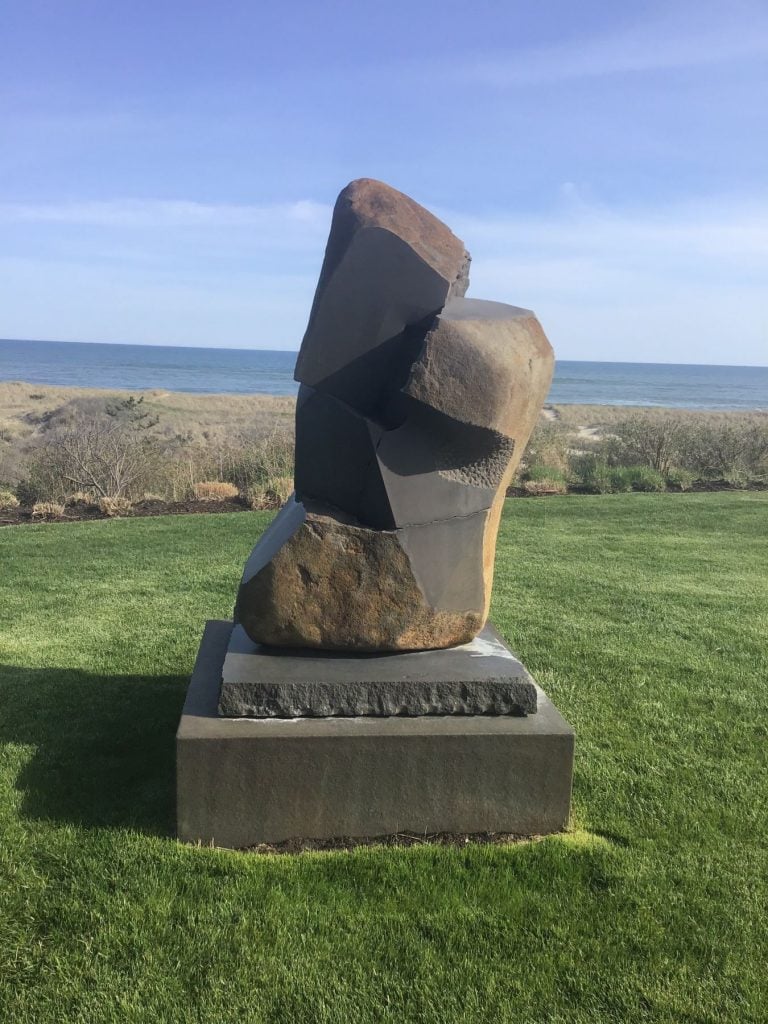
Isamu Noguchi, Stone Embrace (1985). © 2020 The Isamu Noguchi Foundation and Garden Museum, New York / Artists Rights Society (ARS), New York
The collection of J. Tomilson Hill.
For the past weeks, each morning Noguchi’s Stone Embrace calls me to leave our bedroom and start another day in isolation in East Hampton with my wife and daughter. Other than walks on the beach, we have been confined to our house, which has afforded us the opportunity to look at the art in our home with an intensity and focus which we would never have in our “normal” routine.
This basalt sculpture by Noguchi always has something different to say … during a rainstorm when the wind is blowing at 80 knots … during bright clear days, as we see here, when the sun arcs over Stone Embrace and casts shadows on the stone at sunrise and sunset.

Felix Gonzalez-Torres, Untitled”(Perfect Lovers) (1987-1990). © Felix Gonzalez-Torres
The collection of Cindy and Howard Rachofsky. Courtesy of The Felix Gonzalez-Torres Foundation.
Felix Gonzalez-Torres’s artworks were informed by the fact that he was a gay man living with HIV. The discovery of the AIDS virus in the early 1980s and the impact of the AIDS epidemic in the 1990s brought to the fore extreme societal prejudices against the gay community and those living with AIDS. Similarly, this new viral threat has quickly become entangled with other life-threatening realities such as systemic discrimination, domestic violence, climate change, economic inequality, homelessness, and mental health—issues that are often hidden, obscured, misrepresented, or marginalized. In times like these, Gonzalez-Torres’s work reminds Cindy and I of the lessons we learned from the HIV/AIDS pandemic and how those lessons can usefully be applied to the fight against COVID-19. That is, at all times, and to the best of our ability, act with kindness and display compassion and humanity.
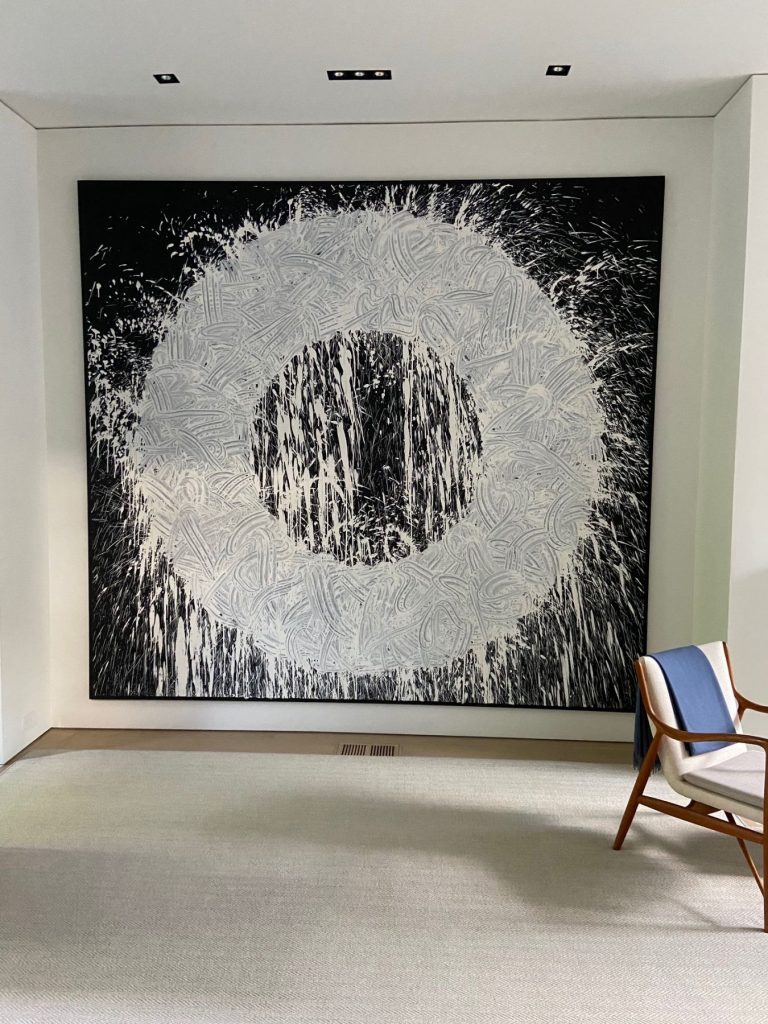
Richard Long, Untitled (2015). © 2020 Richard Long. All Rights Reserved, DACS, London / ARS, NY . The collection of Dan Sallick.
I chose a work we commissioned about five years ago for our living room by the iconic English artist Richard Long. Made from white china clay sourced near the artist’s home and applied by his own hand on linen, the piece has an organic, personal feel that seems intimate, despite its massive scale. In this moment that feels dark and uncertain, this artwork has a relentless positive energy that refuses to bow to the moment. It radiates and welcomes you to each day—allowing you to draw on its dynamic nature to help power through the most surreal moments of this crisis.
For me, this piece represents timeless natural movement and force. Somehow, I look at it and believe everything is going to be OK. I also feel grateful. It reminds me what I love most about collecting art, which is drawing inspiration from the genius and creativity of artists. I will remember that feeling and cherish my newfound appreciation for the art among us long after we move beyond this crisis.
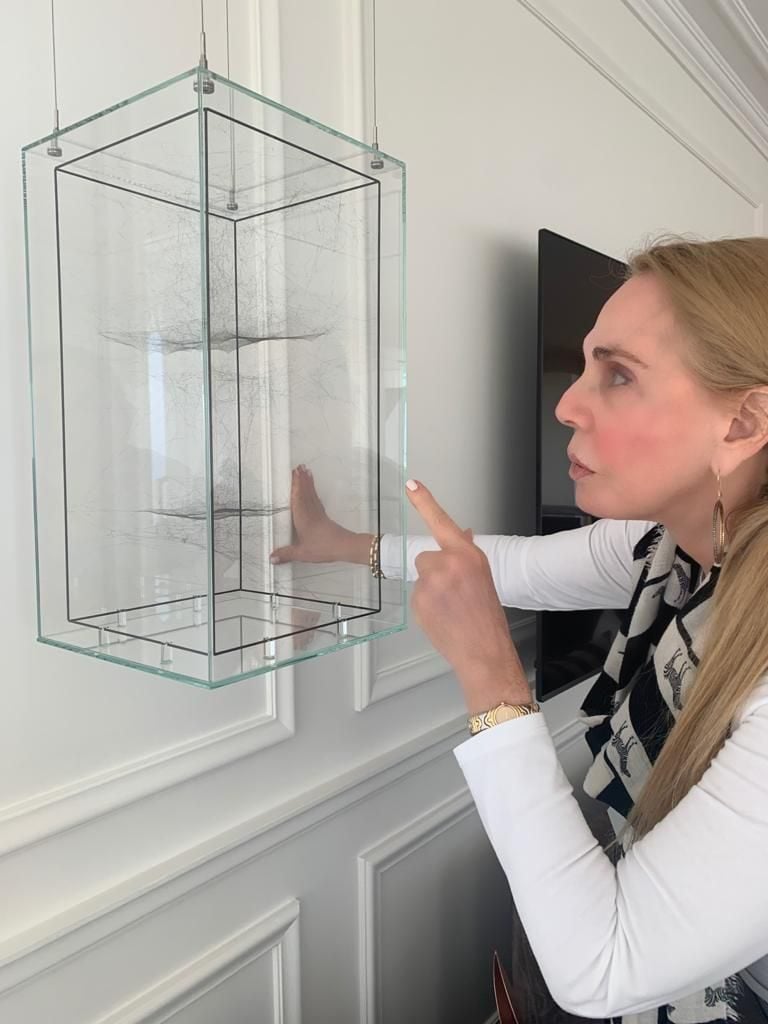
Tomás Saraceno, Hybrid Dark semi-social Choreography HIP 54879 built by: a duet of Cyrtophora citricola-four weeks, (2019). © Tomás Saraceno. The collection of Tiqui Atencio
Courtesy the artist and Tanya Bonakdar Gallery New York / Los Angeles.
When I look at this work, it is not only art that I am admiring; it is also teaching me something. It is making me feel more conscious of how immensely connected we are as human beings. How spiders—these amazing creatures, this ancient species that preceded us on this earth by millions of years—have learned to adapt to their environment without doing any harm to nature, in fact, quite the contrary…
I have always thought of spider webs as a symbol of how I like to collect, and I have more spider webs in my collection, but living with this one has given me a whole new dimension of appreciation.

Barbara Kruger, Untitled (God Sends the Meat and the Devil Cooks) (1988). Courtesy the artist. The Collection of Alain Servais.
I like the following statement, which I read once and from which I am now quoting freely: ‘A museum collection tends to be representing as thoroughly as possible a period in time whereas a private collection is a snapshot.’
I care for the historical, social, political, and cultural context of a work of art. It often has a universal power, but it is better understood in the context of the time in which it was created. This original context does not change with new events. If my perception of a work of art changes, it is probably more often because I understand better or differently the context in which it has been created.
One work that I am happy to highlight for its universal timeliness is this 1988 work by Barbara Kruger. We are at a time when we have to remember that behind every good, there is evil and behind every evil, some good.